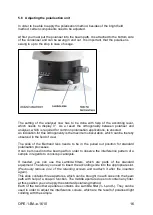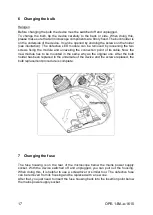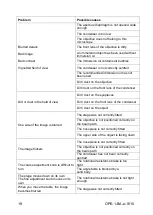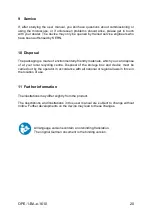
OPE-1-BA-e-1610
10
4.4 Colour filter
Standardly the microscopes of the OPE-1 series are equipped with a blue colour
filter. This filter is firmly connected to a holding ring an you can simply put it onto the
housing of the field lens in case of usage.
4.5 Con Polariser
The condenser is firmly fixed onto a holding ring (condenser holder) underneath the
microscope stage. The lever for the aperture diaphragm is directed towards the front.
There is the ability to adjust the height of the condenser, but not to centre it.
Right beneath the condenser the polariser is attached. According to the application
requirements it can be swung in or out of the beam path.
We recommend that you use the course adjustment knob to bring the specimen
stage to its uppermost position when you need to remove the condenser. Then use
the focus dial of the condenser to move the condenser holder to a low position. In
this way the condenser can be taken off after loosening the three screws on the
holding ring. You should avoid touching the optical lenses with bare fingers.
5
Operation
5.1 Getting started
The very first step is to establish a power connection using the mains plug. You
should first adjust the
dimmer
to a
low level
, so that when you look through the
eyepiece for the first time, your eyes are not immediately subject to a high level of
light. You can now switch on the
lighting
using the
main switch
.
The next step is to
place a slide
with the sample on the round table. The object must
be prepared accordingly in order to be suitable for applications with polarised
transmitting or reflected light. With help of the object holder you can fix the specimen
slide to the table.
The object can be only observed if it is located inside of the beam path.







































